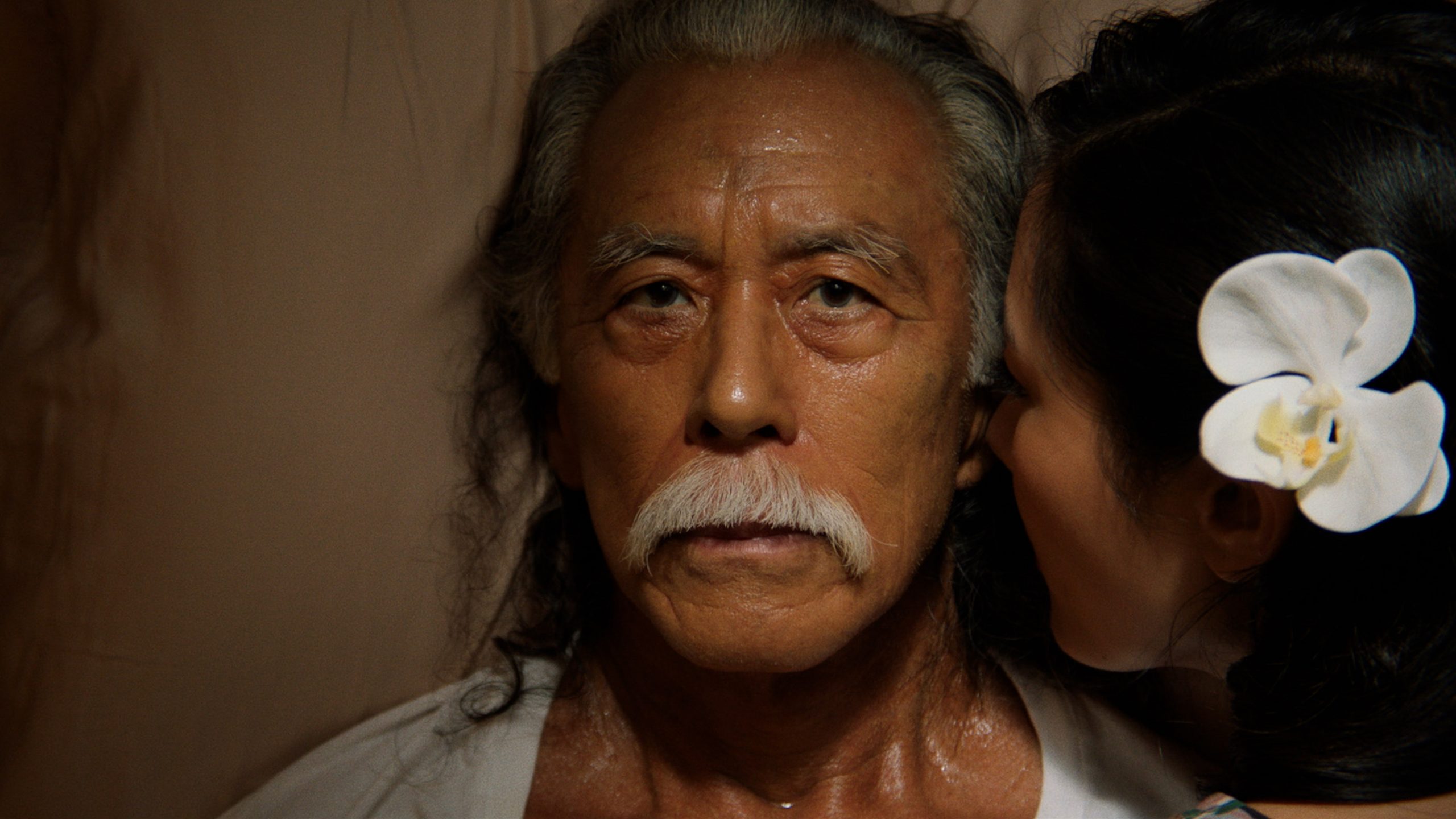 Back to selection
Back to selection
“My Collaborators Are Geniuses”: Editor Christopher Makoto Yogi on I Was a Simple Man
 I Was a Simple Man
I Was a Simple Man Set in the countryside of O’Ahu, Hawai’i, Director Christopher Makoto Yogi’s second feature film I Was a Simple Man is a surreal portrait of an elderly man’s final days. Told in chapters, the film follows Masao (Steve Iwamoto) as he’s visited by ghosts of his past, including his wife Grace (Constance Wu). Acting as the editor for his film, Yogi discusses staying true to his initial emotion in writing the film, as well as the value of brutal honesty in your team.
Filmmaker: How and why did you wind up being the editor of your film? What were the factors and attributes that led to your being hired for this job?
Yogi: As the writer and director, it wasn’t the plan for me to be the sole editor on this film, but because of scheduling issues, it is how it turned out. It was difficult, but I am very lucky to have very trusted and involved collaborators (including my producers, sound designer, composers, etc.) that I consistently show edits to, bounce ideas off of, so that I am not alone in my room hitting my head against the wall. Without them, editing something I’ve written and directed would be a nightmare.
Filmmaker: In terms of advancing your film from its earliest assembly to your final cut, what were goals as an editor? What elements of the film did you want to enhance, or preserve, or tease out or totally reshape?
Yogi: The goal is always to remind myself of the initial idea, the initial emotion and feeling that inspired the film, and to do whatever possible to recapture that spirit. Sometimes this means a lot of rewriting in the edit, sometimes not so much. In the case of I Was a Simple Man, there wasn’t a lot of rewriting in the edit, but the pacing, music, and sound design called for a lot of our attention. Lucky for me, my collaborators are geniuses, so I just trust their work, their feedback, and they bring it.
Filmmaker: How did you achieve these goals? What types of editing techniques, or processes, or feedback screenings allowed this work to occur?
Yogi: Lots of sharing and getting feedback from the team. Another thing: they are totally honest with me and give it to me straight. If something is not working, they do not hold back, and I love them for this.
Filmmaker: As an editor, how did you come up in the business, and what influences have affected your work?
Yogi: I mainly edit documentaries, so my process is like a writer’s. I start by spending a week with my producer Sarah Kim watching everything very closely and taking notes and discussing what we’re feeling while watching the footage. From there, I build out an assembly—pretty much never looking at the script—as quickly as possible. Similar to my process of writing, it helps me to get to the “quick and dirty” rough draft, not thinking too much, so that I have a sense of what’s there. From there we can sit down, watch, and know what we have. Then the sculpting begins.
Filmmaker: What editing system did you use, and why?
Yogi: Adobe Premiere. I’m comfortable on most systems but this one was the most accessible for solo editing at home.
Filmmaker: What role did VFX work, or compositing, or other post-production techniques play in terms of the final edit?
Yogi: We had an incredible VFX artist, Fumiro Sato at Cineric, who worked with us on our VFX beginning in pre-production and through delivery. He did an incredible job helping us to envision, shoot, and then execute the visual effects in post.
Filmmaker: Finally, now that the process is over, what new meanings has the film taken on for you? What did you discover in the footage that you might not have seen initially, and how does your final understanding of the film differ from the understanding that you began with?
Yogi: It’s been my experience that the process is not over at this point, and that the film will continue to change over the course of its life in the world—as it has changed through the writing, the production, and the post-production processes. During the making, my approach is to always embrace this change and to allow the film to be what it wants to be. For me, this is the most exciting aspect of filmmaking, the excitement of not knowing. And so, there is no final understanding really, it will continue to evolve and change as it lives its life out in the world.
